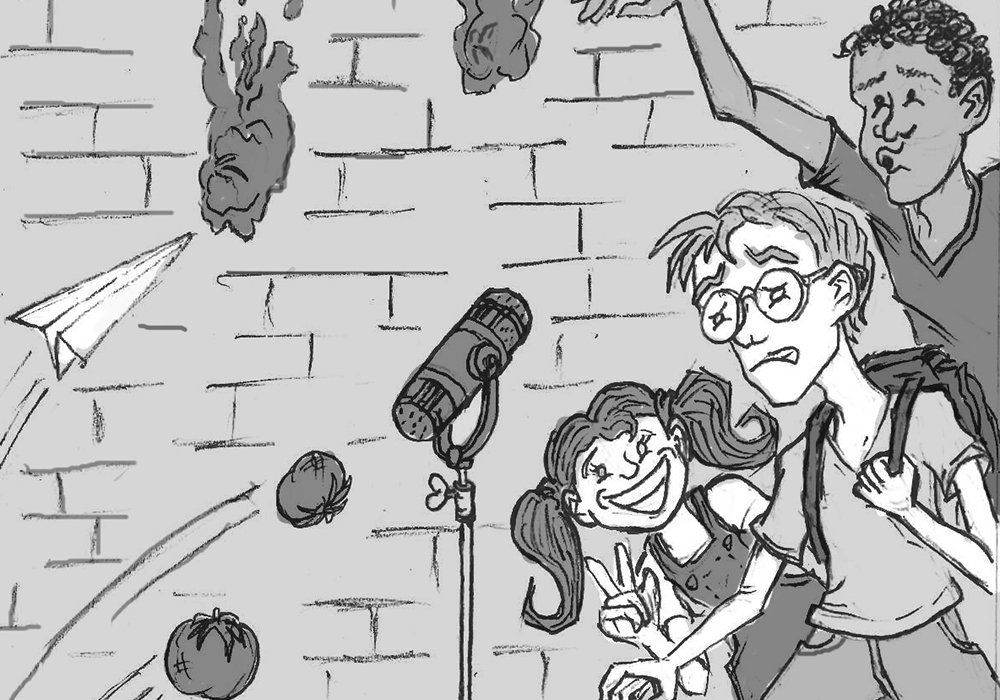Improvisation is not a word commonly used in our lexicon.
We hardly think of what it means, let alone in what context or setting. Likely mentioned in some acting class or while preparing for a presentation, we don’t actively participate in improvisation, at least not consciously. As associate music professor Casey Sokol brings out, we often participate in improvising.
Let’s say, one day, you’re walking and dodging through campus with your lunch in one hand and a cup of coffee in another. You arrive at a door. What do you do? Through improvising your body movement, you twist your elbow and spine in a way that manages to push down the door handle.
Sokol, however, utilizes improvisation in his career.
“In music improvisation, appropriate responses are not only practical but are also aesthetically relevant, emotionally communicative, thoughtful, and executed with intention,” says Sokol.
For musicians, the act of improvising is not so foreign, as it is often referred to as jamming out. For visual artists, sketching is a form of improv. And for the self-proclaimed non-creative type, doodling in our notebook when we should be taking notes, is also a form of improvisation.
As Sokol believes, [su_quote]Spontaneity is central to improvisational behaviour but it’s tricky because acting in-the-moment, without thinking, also invites the participation of automatized behaviour, which is riddled with association and habit.[/su_quote]
The art of improvising is a difficult one, as it requires quick thinking, a creative mind, and passion for your craft. Many think that improvisation is a nerve-racking performance, but Sokol believes it is also innate.
“Creative action does depend on a certain degree of ready-mades and an inventory of deposited knowledge, improvisation requires that the artist remains alert to that whole landscape of response,” he adds.
The improv that many would first image is that of acting, a performance art that many are scared or shy to pursue.
“When [improvisation] involves art, the level of intention becomes very strong, and the demand for a true integration of all our main functions, thinking, feeling, sensing, and moving begins to feel like a real responsibility,” says Sokol, a self-professed shy performer.
But that shouldn’t discourage the timid from pursuing improv.
“I feel my anxiety as a positive experience, because it reminds me that I still care about the quality of communication with listeners. An adjustment of attitude can sometimes be the quickest and most effective remedy,” he adds.
Sokol leads the monthly Improv Soirée, an event organized by the Faculty of Arts, Music, Performance and Design. The event is open to all, audiences and performers alike, and there is no obligation to perform.
All art expressions are welcome, including dancing, storytelling, or comedy. The informal, relaxed environment is meant to prioritize authenticity than rigid performance rules. The ritual of being oneself is the most important thing, says Sokol.
The next Improve Soirée event will begin tomorrow at 8 p.m., room 235 of the Accolade East building.
Viginthiny Paramananthan, Staff Writer
Victoria Goldberg, Arts Editor
Illustration courtesy of Christopher Lai


